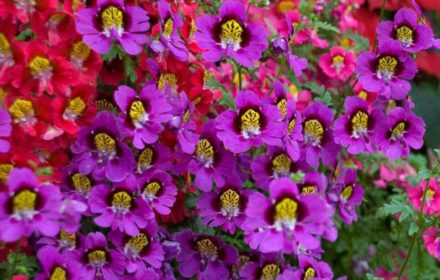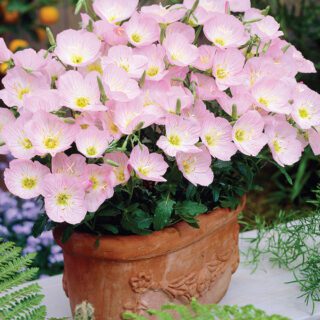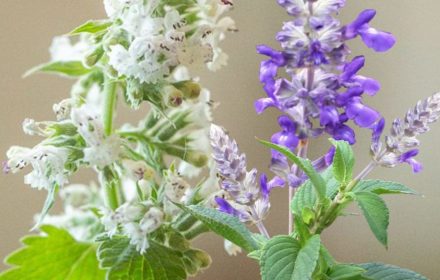How to Grow Blue Fescue Grass from Seeds
Blue Fescue Grass (Festuca glauca) is a striking ornamental grass, valued for its unique, bright blue foliage. This clump-forming, hardy perennial is popular as ground cover or as a feature in garden beds, borders, rockeries, and planters. Reaching a height of up to 30 cm (12 inches), Blue Fescue is highly drought-tolerant and self-seeding, making it a low-maintenance addition to any garden. Its blue hues become even more vibrant under stress, adding texture and contrast to indoor and outdoor spaces alike.
When and Where to Sow Blue Fescue Grass Seeds
- Indoor Sowing: Blue Fescue seeds can be sown indoors at any time of year. Starting seeds indoors allows for better control over temperature and moisture, ensuring successful germination. Seed trays or small pots are ideal for initial sowing, as they make transplanting easier.
- Outdoor Sowing: For outdoor sowing, wait until late spring or early summer (May to June), when temperatures consistently reach around 20°C (68°F). Blue Fescue prefers warm conditions to establish outdoors, so ensure that there are at least 2-3 months of warm weather remaining for the plants to establish.
Ideal Growing Conditions for Blue Fescue Grass
- Soil Requirements: Blue Fescue thrives in well-drained soil. It tolerates poor soils and dry conditions but performs best in a loamy or sandy soil mix. If growing in containers, use a high-quality seed compost mixed with small pieces of grit or rock to improve drainage.
- Sunlight: Choose a sunny location for Blue Fescue. It thrives in full sunlight, which enhances its blue colouration. If growing indoors, place seed trays in a bright spot, such as a windowsill or greenhouse, that receives plenty of direct sunlight.
- Temperature: Ideal germination temperatures are around 20°C (68°F). For outdoor sowing, wait until temperatures are consistently warm, as colder conditions may hinder germination and establishment.
How to Sow Blue Fescue Grass Seeds Indoors
- Sowing in Seed Trays or Pots: Fill seed trays or small pots with a fine seed compost. For improved drainage, mix in small amounts of grit or rock. Lightly press the Blue Fescue seeds into the surface of the compost but do not cover them completely, as they require light to germinate.
- Germination Conditions: Place the trays or pots in a warm, sunny location, such as a conservatory, greenhouse, or windowsill. Germination typically takes between 14 to 21 days under optimal conditions. Maintain a temperature of around 20°C (68°F) throughout the germination period.
- Watering: Keep the compost moist but avoid overwatering, as excessive moisture can lead to rot. Regularly check that the compost remains damp but not waterlogged.
- Transplanting Seedlings: Once the seedlings have grown to about 5 cm (2 inches) tall and have developed strong roots, they can be transplanted into larger pots or directly into the garden. Allow the seedlings another 2 weeks of growth before transplanting to ensure they are robust enough to handle outdoor conditions.
How to Sow Blue Fescue Grass Seeds Outdoors
- Preparing the Soil: Choose a sunny, well-drained area in your garden. Blue Fescue tolerates poor soils, but for best results, loosen the soil and incorporate grit or sand to improve drainage.
- Sowing Depth and Spacing: Scatter the seeds on the surface of the prepared soil, pressing them lightly into the ground. Do not cover the seeds completely, as they need light to germinate. Space plants about 20 cm (8 inches) apart to allow room for clumping as they grow.
- Watering: Water the soil gently after sowing to settle the seeds. Keep the soil consistently moist during germination but avoid overwatering.
- Germination: Germination will occur within 14-21 days, depending on outdoor conditions. Once the seedlings have established, they are relatively drought-tolerant and will require less water.
Caring for Blue Fescue Plants
- Watering: Blue Fescue is drought-tolerant once established. Water regularly during the early stages of growth but reduce watering as the plants mature. Ensure the soil remains well-drained to prevent root rot.
- Feeding: Blue Fescue generally does not require fertiliser, especially if grown in moderately fertile soil. If necessary, a light application of a balanced fertiliser in early spring can help promote healthy growth.
- Pruning: In late winter or early spring, cut back any dead or damaged foliage to encourage fresh, healthy growth. Blue Fescue forms neat clumps that benefit from occasional trimming to maintain their shape.
- Overwintering: This hardy perennial can withstand UK winters, but in areas with severe frost, a layer of mulch around the base of the plants can help protect the roots.
Using Blue Fescue in the Garden
- Borders and Rockeries: Blue Fescue’s unique blue colour and clump-forming habit make it ideal for adding texture and contrast to borders, rockeries, and alpine gardens. It works well when paired with other ornamental grasses or low-growing plants.
- Ground Cover: Blue Fescue spreads naturally, making it an excellent choice for ground cover in dry, sunny areas. Its drought tolerance means it requires minimal maintenance once established.
- Containers and Planters: Due to its compact size, Blue Fescue grows beautifully in pots and containers, adding a splash of colour to patios, balconies, or small garden spaces. Ensure containers have good drainage to prevent waterlogging.
Common Issues and Tips for Growing Blue Fescue
- Slow Germination: Blue Fescue seeds can take up to 21 days to germinate, especially in cooler conditions. Be patient and ensure the seeds are sown in warm, well-drained soil with plenty of sunlight.
- Overwatering: Excessive watering can lead to root rot, especially in young seedlings. Allow the soil to dry out slightly between waterings once the plants are established.
- Pest Control: Blue Fescue is generally pest-free, but young plants may occasionally be targeted by slugs or snails. Protect seedlings with organic slug pellets if needed.
Common Questions About Growing Blue Fescue
- Can Blue Fescue be grown in shade? While Blue Fescue can tolerate partial shade, it thrives in full sun. The blue colouration will be most vibrant when the plant receives plenty of sunlight.
- Is Blue Fescue drought-tolerant? Yes, Blue Fescue is highly drought-tolerant once established. It requires minimal watering and can withstand dry periods, making it a great choice for low-maintenance gardens.
- How long does Blue Fescue live? As a perennial, Blue Fescue can live for several years with proper care. To maintain its shape and vigour, consider dividing mature clumps every 3-4 years.
By following these steps, you can enjoy the striking appearance of Blue Fescue in your garden. Whether used as a ground cover, in rockeries, or as a potted plant, this versatile grass adds both colour and texture to any outdoor or indoor space.



















